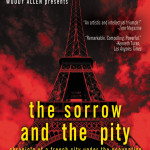I’ll bet most of you who are Euro trippers aren’t aware that European Heritage Days (EHD) exists. I didn’t until our good friend in Paris, Raphaelle Crevet, mentioned this to us a year ago in connection with our research on the next book Where Did They Put the Gestapo Headquarters? A Walking Tour of Nazi Occupied Paris (1940–1944).
Open Door Days
During EHD, European governments open up one or more of their buildings, monuments, or sites for one or two days to the general public (usually in September). These places are normally closed to everyone during the rest of the year. The chosen sites will have some significance to a theme the country picks for the current EHD year. The number of sites ranges from one (e.g., Paris, France) to more than 700 (for “Open House London”).
The French Ministry of Culture started this annual event in 1984 as La Journée Portes ouvertes des monuments historiques (Historic Monument Open Door Days). Today, it is considered a cultural event celebrated by more than fifty European countries. Each country can pick a theme such as architecture, collections, shared history, restoration/protection, archaeology, monuments, and public buildings, just to name a few. Administration of the event is handled jointly by the Council of Europe and the European Commission (europeanheritagedays.com). Read More European Heritage Days

